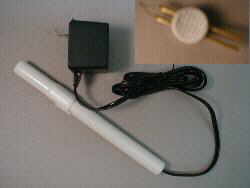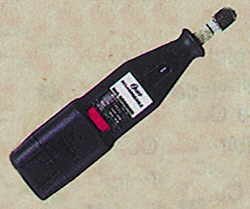
Melissa
Kaplan's
Herp Care Collection
Last updated
January 1, 2014
Claw Trimming
For lizards and other clawed critters
©1996, 2002 Melissa Kaplan
Iguanas, being arboreal lizards, are equipped with deceptively powerful toes and excruciatingly sharp points on their claw. The combination of the two enable them to climb any vertical surface on which they can get purchase, and to inflict some severe damage to human arms, hands and faces.
Living with iguanas is much easier when their claws are regularly trimmed. It is best to start trimming them early - this will reduce the overall growth of the iguana claws as they get older (they won't get as long) AND it habituates the iguana to having its toes handled and claws cut while they are still small enough to not flay your skin.
The claw is in two parts - the thicker part extending out from the toe itself, and the thin, pointed, razor-sharp end which comes off the end of the main claw. It is this last bit that gets cut off.
When they are tiny, you can use people nail clippers but they soon outgrow these. Human clippers, and the guillotine cutters so often used for dogs and large birds crushes and shreds the large claw, and so should not be used. There is a pair of clippers available in the pet trade, marketed for cats and birds (and now being packaged for iguanas), which look like a pair of stubby children's safety scissors. Instead of long blades, they have short stubby ones, with round finger loops which are generally encased in red or gray plastic. Each of the blades has a small semi-circular piece cut out of it. This design allows you to carefully place the cutting edge (the semicircle) on the nail exactly where you want it before you actually clip. As you clip nails over several sessions, the iguanas will become comfortable with the sensations involved, and if you respect them by NOT cutting when they jerk after you place the blades, instead backing off a bit and repositioning it, they will come to trust that you will not hurt them.
If the nails are very brittle, try increasing the frequency of baths. Then, when it is time to cut, remove the iguana from a bath and cut the nails while they are still damp.
Restraint
procedures
For right-handed people, hold iguana in left hand (belly in palm) and
cut with the right; reverse hands for left-handed people. Many iguanas
can easily be trimmed by a single person.
If the iguana is a fusser, wrap him in a large towel and, placing the bundled iguana on the counter in your lap when seated, extract one limb at a time and clip the claws.
If the person cutting is nervous, a second person can actually hold the ig and the leg, allowing the cutter to concentrate on each toe. Large thrashy igs can also be wrapped and held by a second person while the first person clips.
When accidents happen
No matter
how good you are at doing this, the time will come when you hit a bleeder
- clipping the claw too short and cutting through the blood vessel which
runs though the claw.
Like birds, reptiles cannot afford to lose much blood. Fortunately, it is easy to stop the bleeding applying a bit of blood stop powder. Kwikstop is one brand name often found at pet stores, but there are other brands which you may find; cornstarch works well, too. Keep a container of the powder or a small mound of cornstarch at hand when you are doing nails. Continue holding the iguana for 10 minutes or so after applying the blood stop powder/cornstarch to assure the bleeding stops. (Note: do not use Kwikstop or other such quick blood clotting products on cuts, bites, or tips of toes where the claw has been ripped off. These products cause a very painful, long lasting sting which is fine on a tiny claw tip, but not on a wound.)
If you have any hesitation about starting of doing this on your own, and you don't know any one who can show you, make an appointment with your vet, specifying that you just want a few minutes so that they can teach you how to do this. A brief office visit and expert advice is will worth the minimal expense to know that you will be doing it right - if you are nervous, your iguana will know that, and it will make him nervous, or more nervous, which will make you both jittery. Be calm, take your time, and in no time at all it will become a matter of simple routine. Your local herp society would also be a good place to find someone knowledgeable about claw trimming.
Nail/Electro Cautery
and Grinder Devices
Some vets
and groomers use an electric cauterizing device that melts through the
claw and cauterizes the blood vessel at the same time. Others use a two-speed
Dremel®, a tool used by woodworkers and others to accomplish fine
grinding, sanding, shaping, and related tasks.
Those of us who have been clipping animal claws for years using the "old-fashioned" clippers don't see the need for such fancy equipment. Many who start using a nail cautery device it do so because they are nervous about clipping the claws too short using clippers, or are just nervous about doing the clipping, period. It concerns some of us who picture people who are shaky being shaky with devices that can all too easily cut or burn their pets using those devices to trim the claw.
Having used an such a device myself, I can say that I don't care for the odor of the burning claw (and neither, to judge from their response, did the lizards) and I found it took much longer than using my regular clippers.
I have also used a grinder, with a flexible extension cord between the bit and the device, to trim tortoise beak overgrowth. I had someone hold the tortoise while I held her head and carefully trimmed the beak. I can see using it for this on an as-needed basis, but having tried grinding claws, still prefer the clippers I use.
For those interested in exploring these devices, first ask your vet or regular pet groomer to see if they use one or the other, and ask if you can see it in action the when you bring your iguana (or other pet) in for a claw trim.
|
Battery-Operated
Nail Cautery Device
|
Cordless 2-speed
Dremel Note: you may be able to find lower prices for the Dremel and replacement bits at your local builders supply store |
Keep in mind that whatever you use, clippers, cautery or grinder, it is going to take some practice both in holding or otherwise keeping your iguana (or any pet) quiet and comfortable during the trimming procedure, and practice in just doing the act of trimming itself. If you have had a lot of experience trimming claws of other animals, such as dogs, cats, birds, tortoises, etc., clipping iguana, monitor, skink and other claws is no different. Low tech clippers have the advantage of being within everyone's reach, price-wise, very quiet to operate, and won't cause any harm to the pet if you slip and accidentally poke them or rest them on your pets body. They also won't hurt you or your assistant, should you slip while juggling the device and a foot or toes.
Related Articles:

